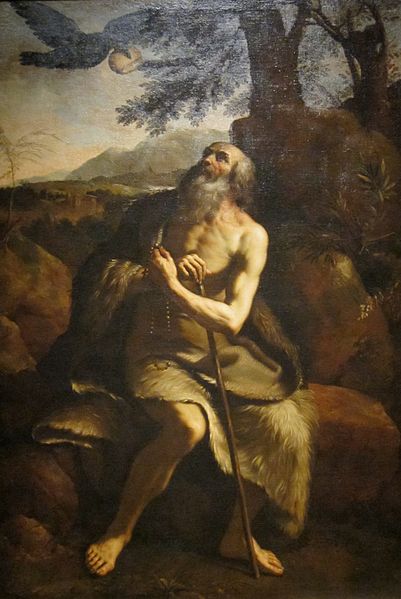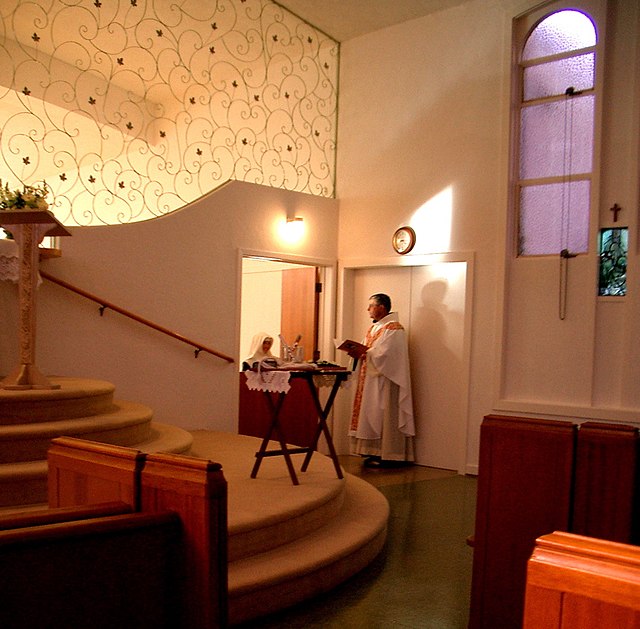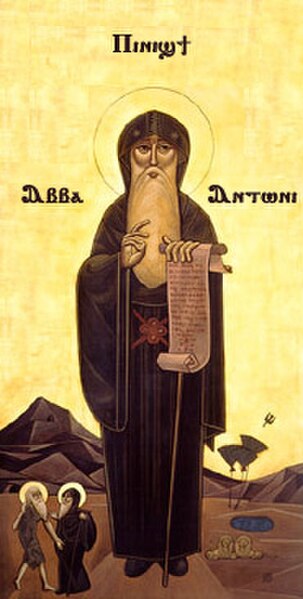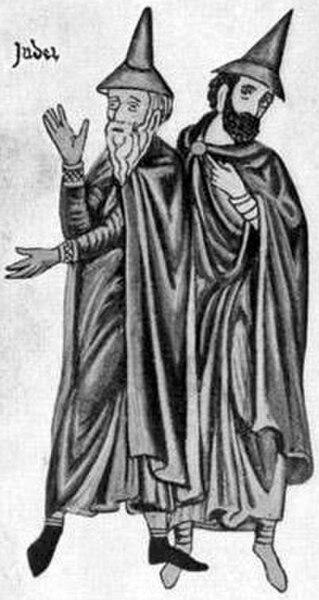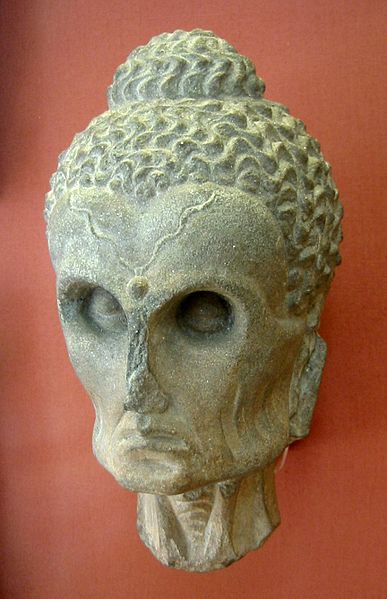Christian monasticism is the devotional practice of Christians who live ascetic and typically cloistered lives that are dedicated to Christian worship. It began to develop early in the history of the Christian Church, modeled upon scriptural examples and ideals, including those in the Old Testament. It has come to be regulated by religious rules and, in modern times, the Canon law of the respective Christian denominations that have forms of monastic living. Those living the monastic life are known by the generic terms monks (men) and nuns (women). The word monk originated from the Greek μοναχός, itself from μόνος meaning 'alone'.
St. Paul the Hermit Fed by the Raven, after Il Guercino (17th century), Dayton Art Institute
Nun profession ceremony for a new nun, admitted to the cloister (behind the half door).
Icon of Saint Anthony the Great, the founder of Christian monasticism
The Monastery of Saint Mary of Parral (Spain) of the Hieronymite hermit monks
Asceticism is a lifestyle characterized by abstinence from sensual pleasures, often for the purpose of pursuing spiritual goals. Ascetics may withdraw from the world for their practices or continue to be part of their society, but typically adopt a frugal lifestyle, characterised by the renunciation of material possessions and physical pleasures, and also spend time fasting while concentrating on the practice of religion or reflection upon spiritual matters, which is thought by some to allow the practitioner's core of consciousness to expand and connect with the infinite universal consciousness. Some individuals have also attempted an ascetic lifestyle to free themselves from addictions to things such as alcohol, tobacco, drugs, entertainment, sex, food, etc.
Coptic icon of St. Anthony the Great, father of Christian monasticism and early anchorite. The Coptic inscription reads 'Ⲡⲓⲛⲓϣϯ Ⲁⲃⲃⲁ Ⲁⲛⲧⲱⲛⲓ' ("the Great Father Anthony").
A Sufi Muslim ascetic (fakir) in Bengal during the 1860s
Chassidei Ashkenaz were a Jewish mystical and ascetic movement in medieval Germany.
The Buddha as an ascetic. Gandhara, 2nd–3rd century CE. British Museum

